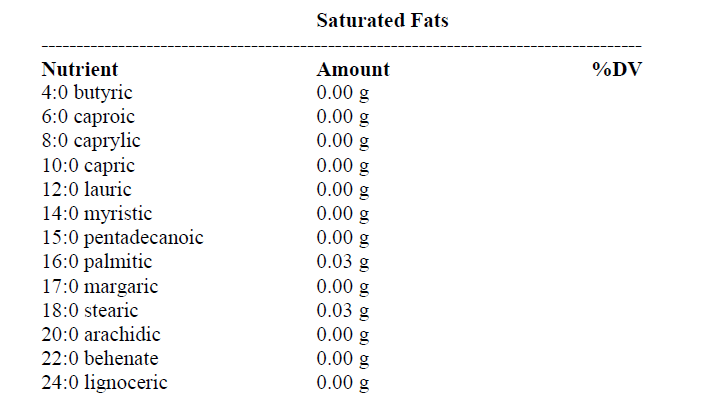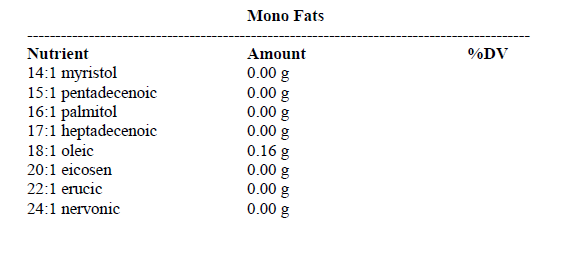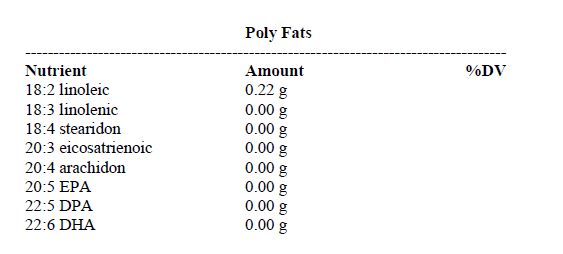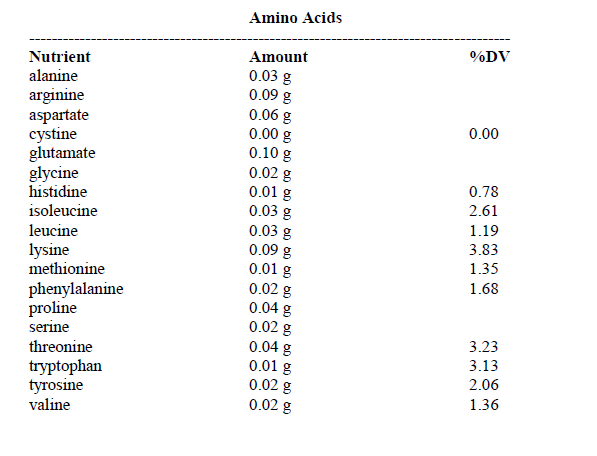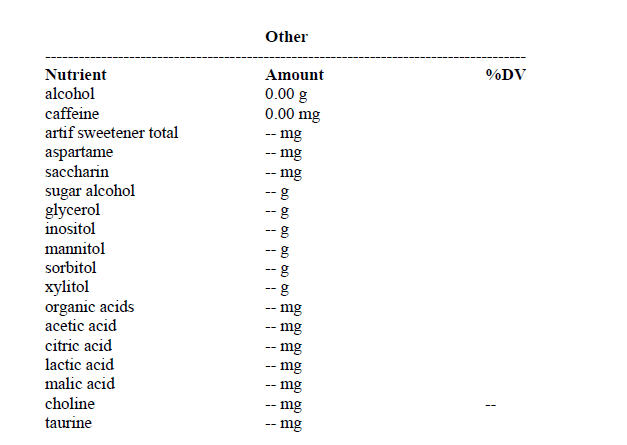Back to > Major Fruits | Minor Fruits | Underutilized Fruits
![]()
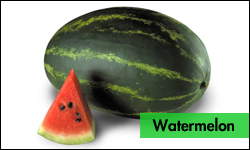 |
||
|
|
||
Nutritive Components:
Watermelon is found to contribute significantly to human health. Fresh watermelon may be eaten in a variety of ways and is also often used to flavor drinks and smoothies. As with many other fruits, it is a source of vitamin C. It is not a significant source of other vitamins and minerals unless one eats several kilograms per day. Watermelon contains vitamins A, C, B6, and potassium. It is fat-free, and high in energy. Watermelon is 92 percent water by weight. It is also mildly diuretic and contains large amounts of beta carotene. Watermelon with red flesh is a significant source of lycopene and contains about six percent sugar by weight, the rest being mostly water. It also contains more lycopene than other fruits or vegetables. Red-fleshed melons contain 6,300-6,800 µg/100g lycopene while orange or yellow-fleshed ones contain 370-420µg/100g and 10-80µg/100g, respectively. Lycopene is not only contribute to the flesh color of the fruit, but it is also important to human health such as reducing the risk of cancer, heart disease and delays aging.
Watermelon, diced (Note: “–” indicates data is unavailable)
Amount 1.00 cup
Total weight 152.00 g
Watermelon rinds are also edible, and sometimes used as a fresh vegetable. In China, they are stir-fried, stewed, or more often pickled. When stir-fried, the de-skinned and de-fruited rind is cooked with olive oil, garlic, chili peppers, scallions, sugar and rum. Pickled watermelon rind is also commonly consumed in the Southern US, Russia, Ukraine, Romania and Bulgaria. In the Balkans, especially Serbia, watermelon slatko is also popular. It is a traditional food plant in Africa, since this fruit has potential to improve nutrition, boost food security, fosters rural development and support sustainable landcare.
Important Phytochemicals:
Health Benefits:
Watermelon is a delectable thirst-quencher may also help quenching the inflammation that contributes to conditions like asthma, atherosclerosis, diabetes, colon cancer, and arthritis.
Nutritionists and health professionals have recognized watermelon’s health properties because it is naturally low in saturated fat, total fat and cholesterol. Do your heart well by eating watermelon, also an excellent source of vitamin C that helps to bolstering artery walls.
Recent published studies on the amino acid citrulline tell us that:
- Watermelon consumption increases free arginine, which can help maintain cardiovascular function.
- Eating watermelon can help maintain cardiovascular health.
- Watermelon has amino acids that help maintain the arteries.
- Watermelon amino acids can help maintain blood flow and heart health.
USDA Article on Citrulline and Heart Healthy Watermelon
USDA.gov: http://www.ars.usda.gov/is/pr/2007/070321.htm
Concentrated in Powerful Antioxidants
Sweet, juicy watermelon is actually packed with some of the most important antioxidants in nature. Watermelon is an excellent source of vitamin C and a very good source of vitamin A, notably through its concentration of beta-carotene. Pink watermelon is also a source of the potent carotenoid antioxidant, lycopene. These powerful antioxidants travel through the body neutralizing free radicals. Free radicals are substances in the body that can cause a great deal of damage. They are able to oxidize cholesterol, making it stick to blood vessel walls, where it can lead to heart attack or stroke. They can add to the severity of asthma attacks by causing airways to clamp down and close. They can increase the inflammation that occurs in osteoarthritis and rheumatoid arthritis and cause most of the joint damage that occurs in these conditions, and they can damage cells lining the colon, turning them into cancer cells. Fortunately, vitamin C and beta-carotene are very good at getting rid of these harmful molecules and can therefore prevent the damage they would otherwise cause. As a matter of fact, high intakes of vitamin C and beta-carotene have been shown in a number of scientific studies to reduce the risk of heart disease, reduce the airway spasm that occurs in asthma, reduce the risk of colon cancer, and alleviate some of the symptoms of osteoarthritis and rheumatoid arthritis. A cup of watermelon provides 24.3% of the daily value for vitamin C, and, through its beta-carotene, 11.1% of the DV for vitamin A.
More on Watermelon’s Lycopene:
Watermelon is also a very concentrated source of the carotenoid, lycopene. Well known for being abundant in tomatoes and particularly well absorbed from cooked tomato products containing a little fat such as olive oil, lycopene is also present in high amounts in watermelon and mangoes. Lycopene has been extensively studied for its antioxidant and cancer-preventing properties. In contrast to many other food phytonutrients, whose effects have only been studied in animals, lycopene has been repeatedly studied in humans and found to be protective against a growing list of cancers. These cancers now include prostate cancer, breast cancer, endometrial cancer, lung cancer and colorectal cancers. A study published in the American Journal of Clinical Nutrition found that in patients with colorectal adenomas, a type of polyp that is the precursor for most colorectal cancers, blood levels of lycopene were 35% lower compared to study subjects with no polyps. Blood levels of beta-carotene also tended to be 25.5% lower, although according to researchers, this difference was not significant. In their final (multiple logistic regression) analysis, only low levels of plasma lycopene (less than 70 microgram per liter) and smoking increased the likelihood of colorectal adenomas, but the increase in risk was quite substantial: low levels of lycopene increased risk by 230% and smoking by 302%.
Researchers report that carotenoids (fat-soluble plant compounds that give plants red, orange and yellow pigments) may act as antioxidants that protect cells from oxygen-related damage that can result from regular cell functions. The antioxidant function of lycopene is its ability to help protect cells and other structures in the body from oxygen damage-has been linked in human research to prevention of heart disease. The primary role of carotenoids in plants is to neutralize compounds created during photosynthesis. These compounds are often hydrogen peroxide or singlet oxygen, both of which will attack and destroy cell membranes, ultimately damaging the cell. Singlet oxygen is oxygen with a higher energy charge because outer orbital electrons are spinning in opposite directions. Humans breathe in oxygen as O2. The biological process in the body uses oxygen for reactions, frequently creating singlet oxygen as a byproduct. The singlet oxygen is very reactive (high electric charge) and therefore must be eliminated by the body before cell damage occurs (Matos et al., 2000). The body uses antioxidants, compounds that look for singlet oxygen and neutralizes it. Of the carotenoids, lycopene is the most effective oxygen scavenger because it can neutralize several singlet oxygens with one lycopene molecule. Other antioxidants are Vitamin C (ascorbic acid) and Vitamin E. Protection of inside of white blood cells has also been shown to be an antioxidant role of lycopene.
Watermelon and Green Tea Team Up to Prevent Prostate Cancer:
Choosing to regularly eat lycopene-rich fruits, such as watermelon, and drink green tea may greatly reduce a man’s risk of developing prostate cancer, suggests research published the Asia Pacific Journal of Clinical Nutrition (Jian et al., 2007)
In this case-control study involving 130 prostate cancer patients and 274 hospital controls, men drinking the most green tea were found to have an 86% reduced risk of prostate cancer compared, to those drinking the least.
A similar inverse association was found between the men’s consumption of lycopene-rich fruits and vegetables such as tomatoes, apricots, pink grapefruit, watermelon, papaya, and guava. Men who most frequently enjoyed these foods were 82% less likely to have prostate cancer compared to those consuming the least lycopene-rich foods.
Regular consumption of both green tea and foods rich in lycopene resulted in a synergistic protective effect, stronger than the protection afforded by either green tea or food rich in lycopene alone. Therefore, get into the habit of drinking green tea and eating lycopene-rich foods such as watermelon.
Energy Production:
Watermelon is rich in the B1 and B6 vitamins necessary for energy production. Because watermelon has a higher water content and lower calorie content than many other fruits, a whole cup of watermelon (contains only 48 calories) delivers more nutrients per calorie which is an outstanding health benefit!
Protection against Macular Degeneration:
Data reported in a study published in the Archives of Ophthalmology indicates that eating 3 or more servings of fruit per day may lower your risk of age-related macular degeneration (ARMD), the primary cause of vision loss in older adults, by 36%, compared to persons who consume less than 1.5 servings of fruit daily. Fruit intake was definitely protective against the severe form of this vision-destroying disease. Watermelon can help us reach this goal.
Arginine to Prevent Erectile Dysfunction, Lower Blood Pressure, Improve Insulin Sensitivity:
One more reason to enjoy watermelon besides being sweet, crunchy, cooling fruit, it is exceptionally high in citrulline, an amino acid our bodies use to make another amino acid, arginine, which is used in the urea cycle to remove ammonia from the body, and by the cells lining our blood vessels to make nitric oxide. Nitric oxide not only relaxes blood vessels, lowering high blood pressure, it is the compound whose production is enhanced by Viagra to prevent erectile dysfunction. Arginine has been shown to improve insulin sensitivity in obese type 2 diabetic patients with insulin resistance (Lucotti et. al, 2006).
In another experiment, volunteers drinking three 8-ounce glasses of watermelon juice each day for three weeks, their blood levels of arginine (synthesized from citrulline provided by the watermelon) were 11% higher than in controls. Meanwhile, volunteers who drank six daily 8-ounce glasses of watermelon juice for 3 weeks had arginine levels 18% higher than controls (Collins et. al., 2007).
Reference:
- “An African Native of World Popularity.” Texas A&M University Aggie Horticulture website. Retrieved Jul. 17, 2005.
- Anioleka Seeds USA. “Yellow Crimson Watermelon”. http://www.vegetableseed.net/heirloom-vegetable-seeds/melon-seeds/watermelon-seeds/yellow.html. Retrieved on 2007-08-07.
- Baker Creek Heirloom Seeds. “Watermelon Heirloom Seeds”. http://rareseeds.com/seeds/Watermelon. Retrieved on 2008-07-15.
- Baker Creek Heirloom Seeds. “Carolina Cross Watermelon”. http://rareseeds.com/seeds/Watermelon/Carolina-Cross. Retrieved on 2008-07-15.
- (BBC) Square fruit stuns Japanese shoppers BBC News Friday, 15 June, 2001, 10:54 GMT 11:54 UK
- “Black Japanese watermelon sold at record price“. http://ap.google.com/article/ALeqM5jJBRT0pnOdQVMUzzkKC_cGHo7IdQD914F62O0. Retrieved on 2008-06-10.
- Blomberg, Marina (June 10, 2004). “In Season: Savory Summer Fruits.” The Gainesville Sun. Retrieved Jul. 17, 2005.
- “Charles Fredric Andrus: Watermelon Breeder.” Cucurbit Breeding Horticultural Science. Retrieved Jul. 17, 2005.
- Collins JK, Wu G, Perkins-Veazie P, Spears K, Claypool PL, Baker RA, Clevidence BA. (2007). Watermelon consumption increases arginine plasma concentrations in adults. Nutrition 23(3):261-6.
- “Cream of Saskatchewan Watermelon“. http://www.seedsavers.org/prodinfo.asp?number=778. Retrieved on 2007-04-23.
- “Crop Production: Icebox Watermelons.” Washington State University Vancouver Research and Extension Unit website. Retrieved Jul. 17, 2005.
- Daniel Zohary and Maria Hopf, Domestication of Plants in the Old World, third edition (Oxford: University Press, 2000), p. 193.
- Dayer, R.D. (1975). The Genera of Southern African floweringbplants Vol. 1. Dicotyledons, Department of Agricultural Technical Services. South Africa: Botanical Research Institute.
- Evans, Lynette (2005-07-15). “Moon & Stars watermelon (Citrullus lanatus):Seed-spittin’ melons makin’ a comeback”. http://sfgate.com/cgi-bin/article.cgi?file=/chronicle/archive/2005/07/16/HOG4UDNGDB1.DTL. Retrieved on 2007-07-06.
- Hamish, Robertson. “Citrullus lanatus (Watermelon, Tsamma).” Museums Online South Africa. Retrieved Mar. 15, 2005.
- H. Mandel, N. Levy, S. Izkovitch, S. H. Korman (2005). “Elevated plasma citrulline and arginine due to consumption of Citrullus vulgaris (watermelon)”. Berichte der deutschen chemischen Gesellschaft 28 (4): 467–472. doi:10.1007/s10545-005-0467-1.
- “The column of watermelon peel from 5hpk.com”.
- http://www.5hpk.com/Html/TOPIC/200807172.html. Retrieved on 2008-07-15.
- http://www.agriculture.gov.gy/Farmers%20Manual/PDF/Watermelon.pdf. Retrieved on 2009-07-30
- Jian L, Lee AH, Binns CW. Tea and lycopene protect against prostate cancer. Asia Pac J Clin Nutr. 2007;16 Suppl 1:453-7. 2007. PMID:17392149.
- Lucotti P, Setola E, Monti LD, Galluccio E, Costa S, Sandoli EP, Fermo I, Rabaiotti G,Gatti R, Piatti P. (2006). Beneficial effects of a long-term oral L-arginine treatment added to a hypocaloric diet and exercise training program in obese, insulin-resistant type 2 diabetic patients. Am J Physiol Endocrinol Metab:291(5):E906-12.
- Matos HR, Di Mascio P, Medeiros MH. Protective effect of lycopene on lipid peroxidation and oxidative DNA damage in cell culture. Arch Biochem Biophys 2000 Nov 1;383(1):56-9 2000.
- “Melitopolski Watermelon“. http://www.seedsavers.org/prodinfo.asp?number=267. Retrieved on 2007-04-23.
- “Moon and Stars Watermelon Heirloom“. http://rareseeds.com/seeds/Watermelon/Moon-and-Stars. Retrieved on 2008-07-15.
- “Moon and Stars Watermelon“. http://www.seedsavers.org/prodinfo.asp?number=266. Retrieved on 2007-04-23.
- Motes, J.E.; Damicone, John; Roberts, Warren; Duthie, Jim; Edelson, Jonathan. “Watermelon Production.” Oklahoma Cooperative Extension Service. Retrieved Jul. 17, 2005.
- Müller T, Ulrich M, Ongania KH, Kräutler B. (2007). Colorless tetrapyrrolic chlorophyll catabolites found in ripening fruit are effective antioxidants. Angew Chem Int Ed Engl. 2007;46(45):8699-702.
- National Research Council (2008-01-25). “Watermelon”. Lost Crops of Africa: Volume III: Fruits. Lost Crops of Africa. 3. National Academies Press. ISBN 978-0-309-10596-5. http://books.nap.edu/openbook.php?record_id=11879&page=165. Retrieved on 2008-07-17.
- “Oklahoma Declares Watermelon Its State Vegetable“. 2007-04-18. http://cbs4denver.com/watercooler/watercooler_story_108064706.html. Retrieved on 2007-07-20.
- “Orangeglo Watermelon“. http://www.seedsavers.org/prodinfo.asp?number=1108. Retrieved on 2007-04-23.
- Parsons, Jerry, Ph.D. (June 5, 2002). “Gardening Column: Watermelons.” Texas Cooperative Extension of the Texas A&M University System. Jul. 17, 2005.
- Salleh, H. (1986). Constrain and challenges in melon breeding in Peninsular Malaysia. Proc. Of the Plant and Animal Breeding Workshop, Serdang: MARDI
- Shosteck, Robert (1974). Flowers and Plants: An International Lexicon with Biographical Notes. Quadrangle/The New York Times Book Co.: New York.
- Southern U.S. Cuisine: Judy’s Pickled Watermelon Rind
- http://home.howstuffworks.com/watermelon3.htm
- Stone, B.C. (1970). The flora of Guam. Micronesic 6: 562.
- Vegetable Research & Extension Center – Icebox Watermelons”. http://agsyst.wsu.edu/Watermelon.html. Retrieved on 2008-08-02.
- Wada, M. (1930). “Über Citrullin, eine neue Aminosäure im Presssaft der 28. Wassermelone, Citrullus vulgaris Schrad.”. Biochem. Zeit. 224: 420.
- “Watermelon.” The George Mateljan Foundation for The World’s Healthiest Foods. Retrieved Jul. 28, 2005.
- “Watermelon History.” National Watermelon Promotion Board website. Retrieved Jul. 17, 2005.




